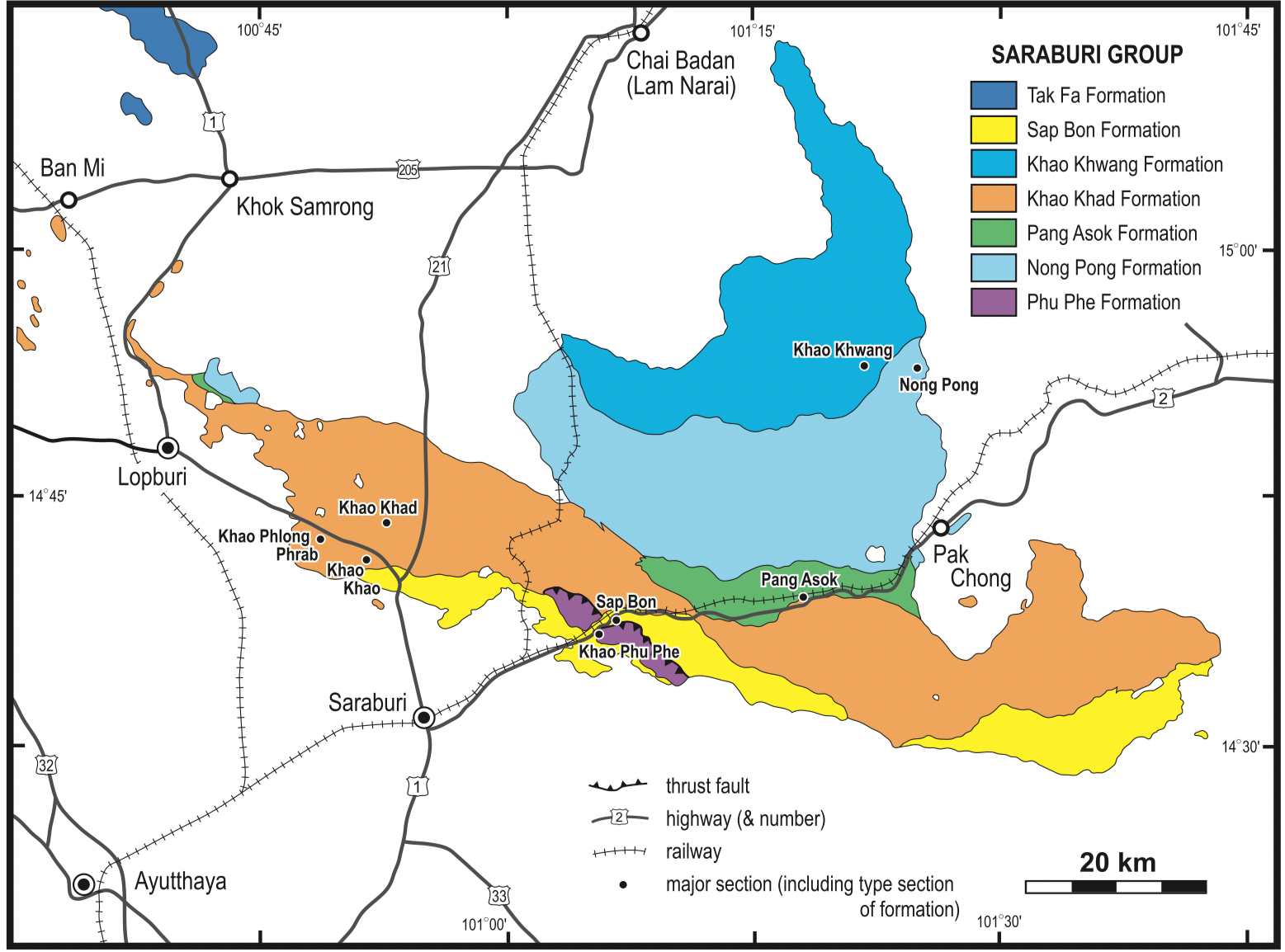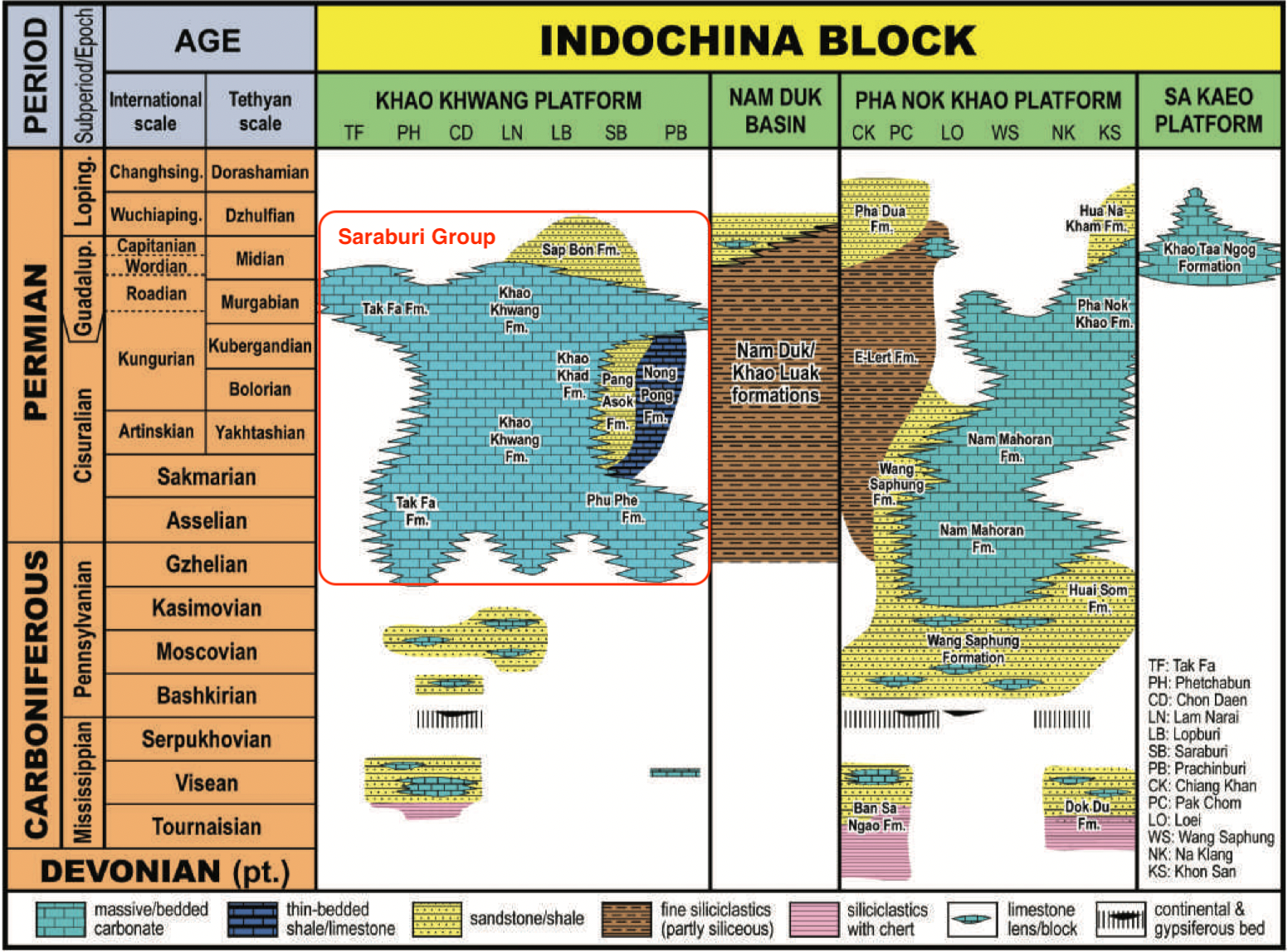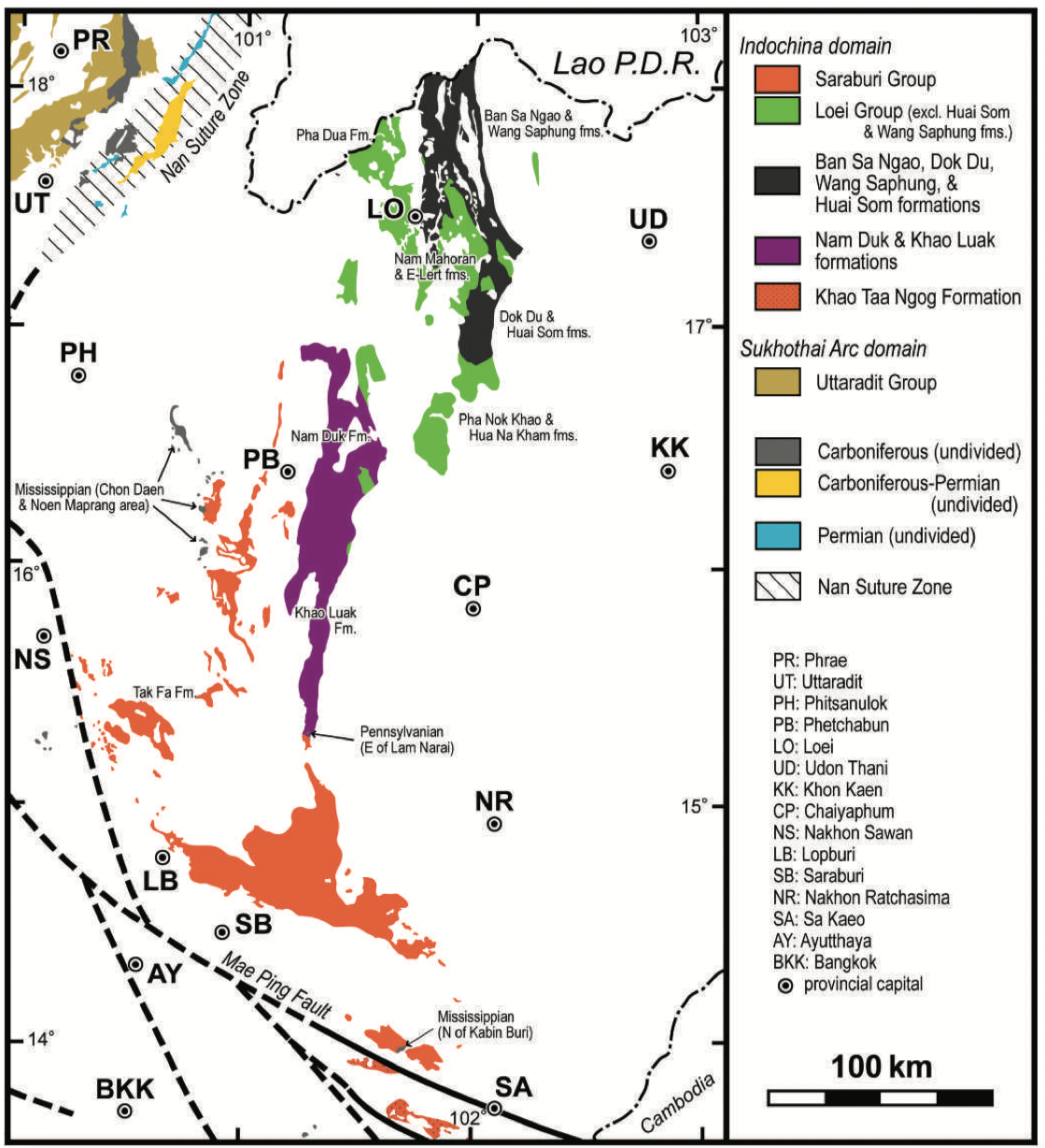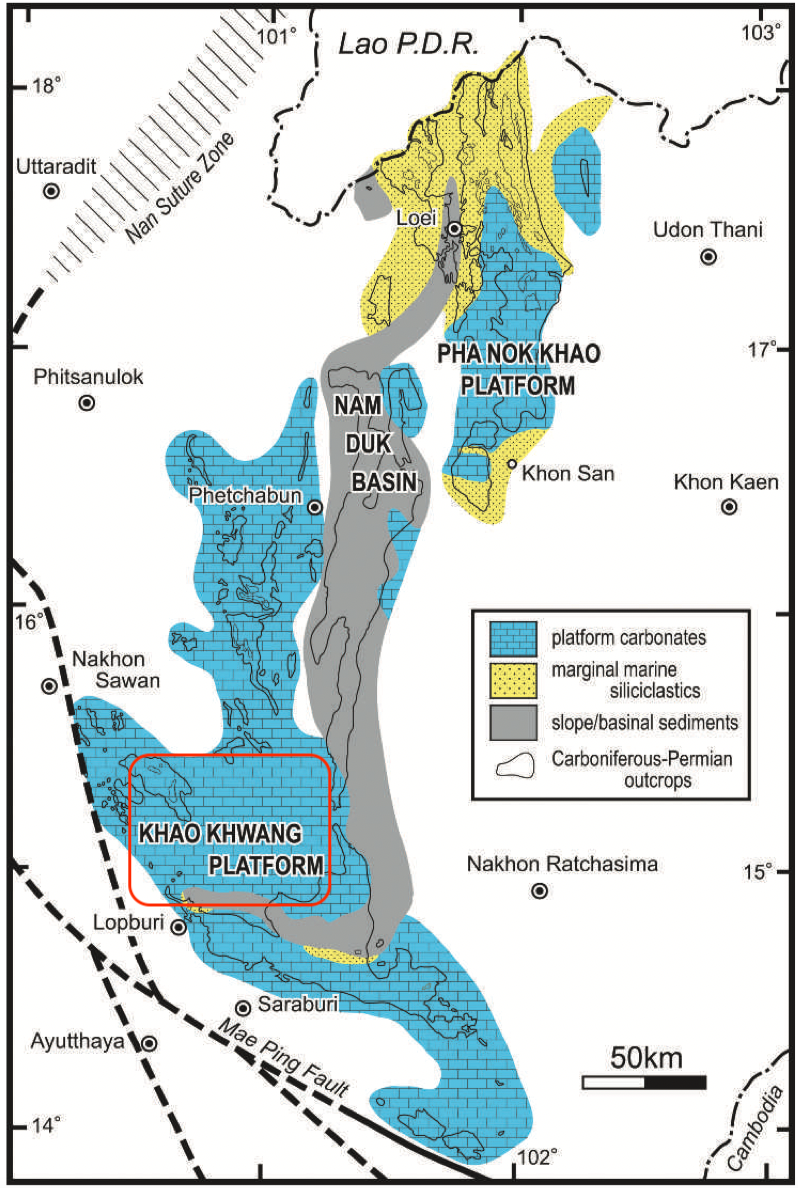Pang Asok Fm
Type Locality and Naming
Khao Kwang Platform (Saraburi region): Pang Asok village, nearby Pang Asok railway station, grid ref. 550 to 560 E and 220 to 226 N (Hinthong and others, 1985). Parent unit: Saraburi Gr.
[Figure: Geological map of Saraburi Group in Saraburi area, NE Thailand (Ueno and Charoentitirat, 2011).]
Synonym: หมวดหินปางอโศก
Lithology and Thickness
[Figure: Carboniferous and Permian facies distribution and resultant stratigraphic subdivisions on the western margin of the Indochina Block, with Saraburi Group highlighted (Ueno and Charoentitirat, 2011).]
Relationships and Distribution
Lower contact
Upper contact
GeoJSON
Fossils
Age
Depositional setting
[Figure: Late Paleozoic major facies subdivisions on the western margin of the Indochina Block by Ueno and Charoentitirat (2011). (Slightly modified from Wielchowsky & Young 1985).]
Additional Information
This formation is also largely time-equivalent to the Phu Phe Fm, Khao Khad Fm and Khao Khwang Fm and probably represents a marginal-marine siliciclastic facies of the Khao Khwang Platform (Ueno & Charoentitirat, 2011).



